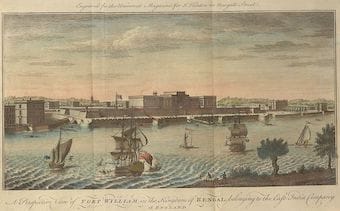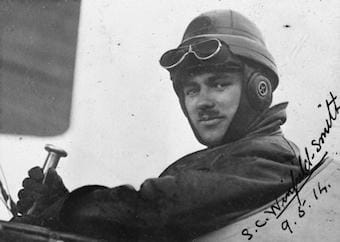1009
Adam Smith argued that the Bengal Famine of 1769 would have been much less of a tragedy under a free trade policy.
The Bengal Famine of 1769 was a humanitarian catastrophe and an ugly blot on Britain’s colonial record. Scottish economist Adam Smith, a severe critic of colonial greed and the East India Company, believed that it would have been no more than a manageable food-shortage had the Company pursued a policy of free trade.
Picture: Via Wikimedia Commons. Licence: Public domain.. Source.
Posted December 29 2017
1010
The Governor of Bengal accused the East India Company of turning a crisis into a humanitarian catastrophe.
The terrible famine which struck Bengal from 1769 was partly a freak of nature, but Warren Hastings, Governor of Bengal, blamed a culture of corruption and negligence in the East India Company for making the effects far worse than they needed to be, and was not prepared to turn a blind eye.
Picture: © Abhijit Kar Gupta, Wikimedia Commons. Licence: CC-BY-SA 2.0.. Source.
Posted December 29 2017
1011
George Santayana had the chance to observe our national character at the height of Empire.
Spanish-American philosopher George Santayana (1863-1952) spent the Great War (1914-1918) in England, which gave him a chance to see the average Englishman at the height of Empire, and in the midst of crisis. His affectionately teasing sketch perhaps flatters to excess, and many at home and abroad would have drawn a different one; but his fears proved to be only too well founded.
Picture: From the Imperial War Museums, via Wikimedia Commons. Licence: Public domain.. Source.
Posted December 22 2017
1012
Anglo-Saxon abbot Elfric tentatively likened the new-born Jesus to an egg.
In a Sermon for Christmas Day, Anglo-Saxon abbot Elfric of Eynsham likened the new-born baby in the manger to an egg. His purpose was serious: he wanted his congregation to understand that Jesus Christ was the incarnate Son, Word and Wisdom of God, not merely a prophet or good man that God loved like a son.
Picture: © Manojz Kumar, Wikimedia Commons. Licence: CC BY-SA 4.0.. Source.
Posted December 19 2017
1013
Canadian sailor William Hall was summoned over to India to help face down the Indian Mutiny.
William Nelson Hall (1827-1904) had every reason to love the Royal Navy. Under instructions from the Admiralty in London, the Navy had helped his parents and thousands of others to escape slavery in Maryland. The Halls were resettled as free citizens in Nova Scotia, where William was born, and he repaid the Navy handsomely during the Indian Mutiny thirty years later.
Picture: From Wikimedia Commons. Licence: Public domain.. Source.
Posted December 17 2017
1014
During the Indian Mutiny, over a thousand men, women and children were trapped in the Commissioner’s residence at Lucknow.
The Indian Mutiny in 1857 saw many of the East India Company’s sepoys (Indian soldiers) join with angry princes to protest at the Company’s disrespectful and corrupt administration. The revolt turned nasty, and in June that year things looked bleak for the Company’s staff at Lucknow, in the former Kingdom of Oudh.
Picture: © Khalid Ahmed, Wikimedia Commons. Licence: CC-BY-SA 3.0.. Source.
Posted December 15 2017





